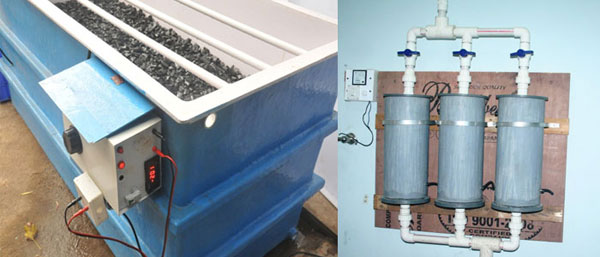
Aquatic environment and health management Division of ICAR- Central Institute of Fisheries Education, Mumbai has designed a water filtration unit with an electrically charged column for the treatment of contaminated water without any use of chlorination and de-chlorination chemicals.
The unit consists of an electrically charged column with physically entrapped adsorbents. Initial trials of the unit with 5 ppm ammonia concentration showed 40-60% removal of ammonia from water. The unit was able to remove about 40% Arsenic (III) from water at 5ppm initial concentration. The flow rate of the unit is 20L/min (1200L/h) and the material used for the fabrication can be reused without loss of the efficiency. The trials of the unit with Vibrio spp showed complete elimination of bacteria after the filtration though the unit. The unique feature of the technology is its chlorine-free disinfection process where no chemicals are used for chlorination and de-chlorination processes. The process of patenting of the technology is underway.
Infectious diseases are the major limiting factors in aquaculture production, especially in penaeid shrimp culture. Among the infectious agents, white spot syndrome virus (WSSV) is the most devastating virus pathogen causing sudden and heavy mortality both in hatchery and grow-out system. WSSV has emerged as one of the most prevalent and lethal viral pathogens infecting penaeid shrimp.
Our laboratory has developed and standardised a novel, real time quantitative PCR assay method for detecting and quantifying WSSV using specifically designed primers and probe targeting genes associated with latency and has the ability to detect the infection at an early stage as well. The assay has been applied to quantify the viral load in different experimental set up as well as in clinical samples.
Innate immune mechanism plays a crucial role in the immune defence of invertebrates. Innate immune system recognizes the invariant molecular components of pathogens; pathogen associated molecular patterns (PAMPs), through germline-encoded receptors. These receptors in the hosts recognizing these patterns are known as pathogen recognition receptors (PRRs).
The strategy of using conserved PAMPs through PRRs not only allows the recognition of wide variety of PAMPs but also helps in preventing the escape of mutant pathogens. Our laboratory has been engaged in identifying and characterising PRRs from aquatic animals, especially shrimp, Penaeus monodon. In a recent study, we have provided experimental evidences to prove that Toll-like receptor (TLR) pathway in shrimp, P. monodon responds to white spot syndrome virus (WSSV), through molecular characterisation and expression profiles of key genes involved in Toll pathway such as MyD88, TRAF6 and TLR.

Edwardsiella tarda is an important pathogen of freshwater aquaculture system which causes edwardsiellosis in many species of fishes.
Serological tests like bacterial agglutination test and ELISA using monoclonal antibodies enable quick and rapid identification of the bacteria. The bacterial outer membrane protein, glyceraldehyde-3-phosphate dehydrogenase (GAPDH), a 37kDa protein is well conserved across different serotypes of E. tarda, was used for generating monoclonal antibodies. The MAbs were characterized by Western blotting and isotyping. The cross reactivity test with other bacteria and animal tissue showed that the MAbs were specific to GAPDH.
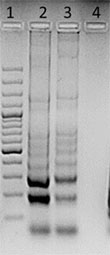
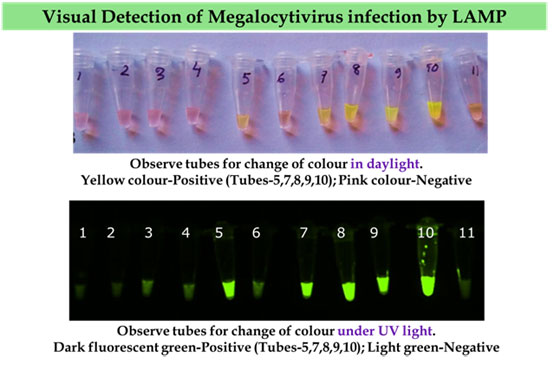
Loop mediated isothermal amplification (LAMP) assay is a rapid, novel and simple method for the detection of pathogens. LAMP assay for the detection of Megalocytivirus is standardised in our laboratory.
Sensitivity/Detection limit of LAMP assay for detection of Megalocytivirus (MCV) was found to be as low as 1 copy of the linearized plasmid (pBM3A-MCP) containing major capsid gene of MCV. No amplification was detected with RSIV, Betanoda virus, E. tarda, A. hydrophila and P. aeruginosa. This result indicates that LAMP method is highly specific to MCV Sabah strain.
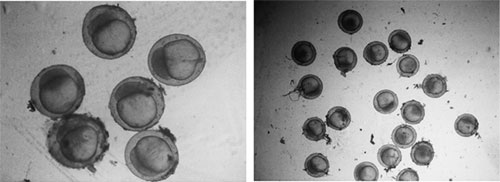
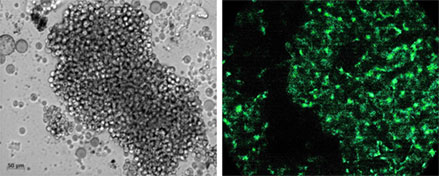
Embryonic stem cells (ESC) are pluripotent, self-renewing cells that are derived from the inner cell mass (ICM) of the developing blastocyst. The isolated cells can be grown over different feeder layers or as feeder free cultures.
Isolation and propagation of embryonic stem (ES) like cells from inner cell mass (ICM) of mid-blastula stage embryos was achieved. Media formulation for ES cells from Goldfish was successfully determined. Comparative study was performed on the expression profile of pluripotent stem cell marker genes i.e. Oct-4, POU 2, SOX 2, SOX 3 and Nanog.
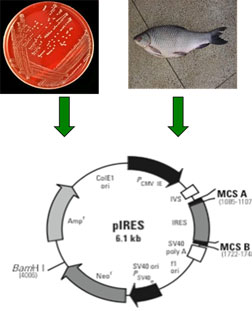
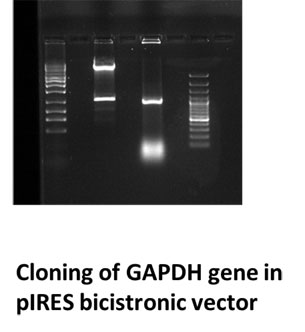
Edwardsiella tarda is serious pathogen infecting farmed and wild fishes worldwide and it is a zoonotic pathogen. As a preventive measure, a bicistronic plasmid DNA vaccine construct is developed in our laboratory with the GAPDH gene of E. tarda and IFN-γ of Labeo rohita as an adjuvant, using pIRES a eukaryotic expression vector. In the experimental trial, vaccinated fishes showed a relative percentage survival of 75% compared to unvaccinated fishes (55%). This proves the potential of plasmid vaccine to control the Edwardsiella infection in fishes.
Development of primary cell culture systems from crustaceans for the replication of the virus in vitro can be considered as one of the most reliable methods for understanding the mechanism of infection and pathogenesis.
There have been many attempts at developing cell lines from penaeid shrimps with limited success. Our laboratory has attempted to establish primary cultures from different tissues/cells of mud crab, Scylla serrata and to understand whether these cells would support white spot syndrome virus (WSSV) replication. Primary cell cultures were developed from haemocytes and testis of crab and evidence of virus (WSSV) replication could be provided using real-time PCR. Viability of the virus cultured in the cells were also proved through multiple passages and testing the infectivity of the virus in shrimp, P. monodon.